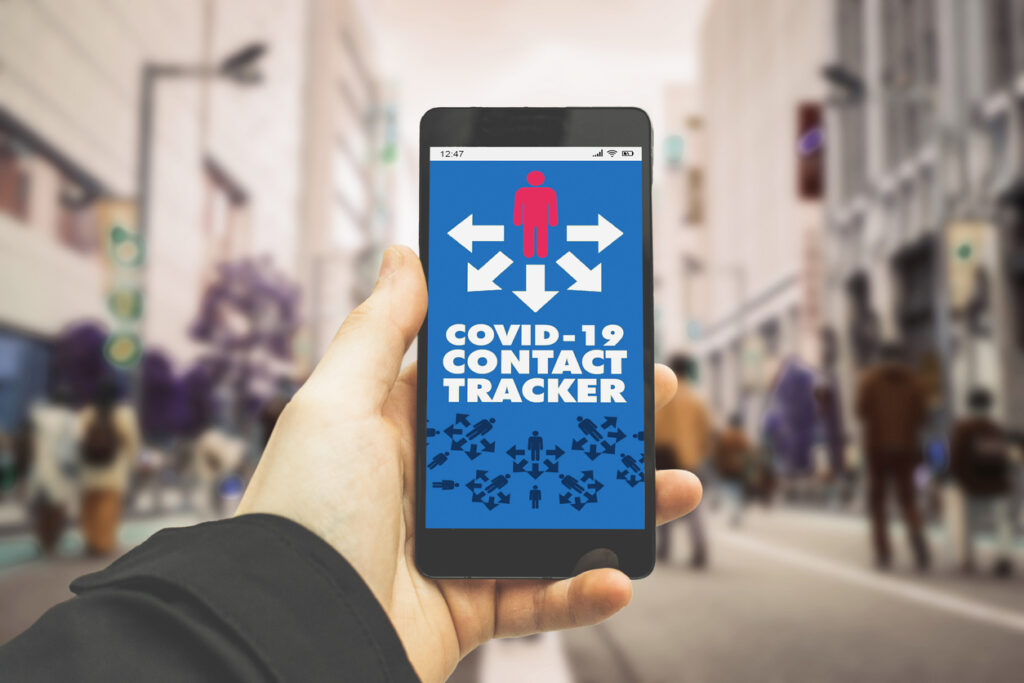Businesses are suddenly finding themselves in a hybrid on-site/remote working model due to the NHS Covid-19 app. Users of the app are ‘pinged’ if they come into contact with someone diagnosed with Covid. They are then instructed to self-isolate for a set period, often ten days.
Managing during the pandemic calls for an extra dose of empathy and emotional intelligence.
According to Jim Pickard and others, writing in the Financial Times, “Hundreds of thousands of workers are staying at home . . . prompting labour shortages across several industrial sectors”. While not all employees are able to work from home, where you have those who can, here are five considerations to help you manage this hybrid situation.
Be prepared for the ping
Don’t wait until an employee is pinged and asked to isolate. Ask all your people to consider having at least a plan for a home office. Employees who were already working from home during lockdown are likely to have established their home office set up and technology, but it’s a good idea to check in with them to ensure this is still the case. For those who may not have done it before, it’s important to highlight that working from the sofa or kitchen table isn’t a great solution, in terms of both ergonomics and managing distractions from family, pets and the TV. Although the isolation may only last ten days, a quiet haven is important.
You also should be ready to help ensure the homebound employee has the infrastructure they need. This would include a laptop and broadband connection – the connection piece may require advance planning if some employees don’t have it already. They may be able to use a smartphone as a ‘hotspot.’ Also, consider proper cyber security, such as providing home workers access to a virtual private network (VPN).
One of the biggest challenges may be that you feel you can’t manage what you can’t see. One solution is to have regular check-ins. In addition, focus on performance to goals or metrics, rather than judging whether or not someone ‘looks busy.’
Be flexible
Now that an employee is working from home, both the employee and you (or their manager) will need to make some accommodations. Many jobs require that the employee be available during regular business hours, but not all. Depending on the home situation (more on this below), it may be easier for an employee to work during off hours.
In fact, this is an opportunity to empower the employee and demonstrate that you trust them. This could go a long way toward improving the employee’s engagement beyond the ten-day isolation. Autonomy doesn’t mean doing whatever you want. It means the license to work independently, in one’s own way, and/or to make certain decisions for oneself. Again, focus on results, not work habits.
Consider employees first
Managing during the pandemic calls for an extra dose of empathy and emotional intelligence, and human focused leadership is a great structure to use for that. It teaches leaders to focus on the employee first, then the work. An important first step, according to executive coach Chuen Chuen Yeo, is to acknowledge that each employee is a human being with needs, and to consider how your organisation helps people fulfil those needs.
This applies to employees on-site and at home, but can make a particularly big impact with the pinged employee who is stressed about Covid exposure and about making a big change for work. Other key elements of human focused leadership:
- Ensure all employees and leaders are aligned on the company’s overall vision and goals.
- Enthusiastically embrace diversity to expand the company’s pool of ideas.
- Nurture co-creation to promote innovation.
- Accept all ideas and build on ones that make most sense – encourage brainstorming with a ‘no bad ideas’ culture.
- Celebrate failures as well as successes, as failures provide an opportunity to learn.
Be prepared for illness
If an employee has been exposed to a Covid carrier, there is a chance that they will become ill. As we’ve all learned, some experience very challenging symptoms while others experience lighter symptoms. For those in the latter category, you should have everything in place to enable them to continue working from home if they choose and if their physician approves.
You also need a contingency in case an employee has to take extended time off due to illness, and is not able to work at all. Consider how you might reassign an employee’s responsibilities for the duration of the illness, whether that’s to one other person or divided among several team members. Another option is to bring in a temporary employee or contractor.
Understand employees’ home situations
Working on-site is a one-size-fits-all situation, but the situation at home can differ widely from employee to employee. Someone who lives alone or only with an adult spouse or partner may not be terribly inconvenienced. Someone who lives in a household with several children and/or multiple generations, on the other hand, may have unique challenges.
In my latest book, which I co-authored with Kim Shepherd, we developed a case study with Cornerstone OnDemand founder Adam Miller. He was just about to integrate a thousand new employees from an acquisition when Covid hit.
In solving that double whammy, he and his team found they needed to provide tailored support for unique needs. For households with children, they provided links to childcare resources. Multigenerational households got resources like Wi-Fi hotspots and furniture.
[cm_form form_id=’cm_65a14c3f5da64′]
To wrap up, it’s important to take a deliberate and thoughtful approach to planning. Managing hybrid teams has its challenges, but by planning ahead, you can make adaptations with minimal disruption.
Interested in this topic? Read Learning to live with Covid: why company policy needs to change in response to new wellbeing challenges.







